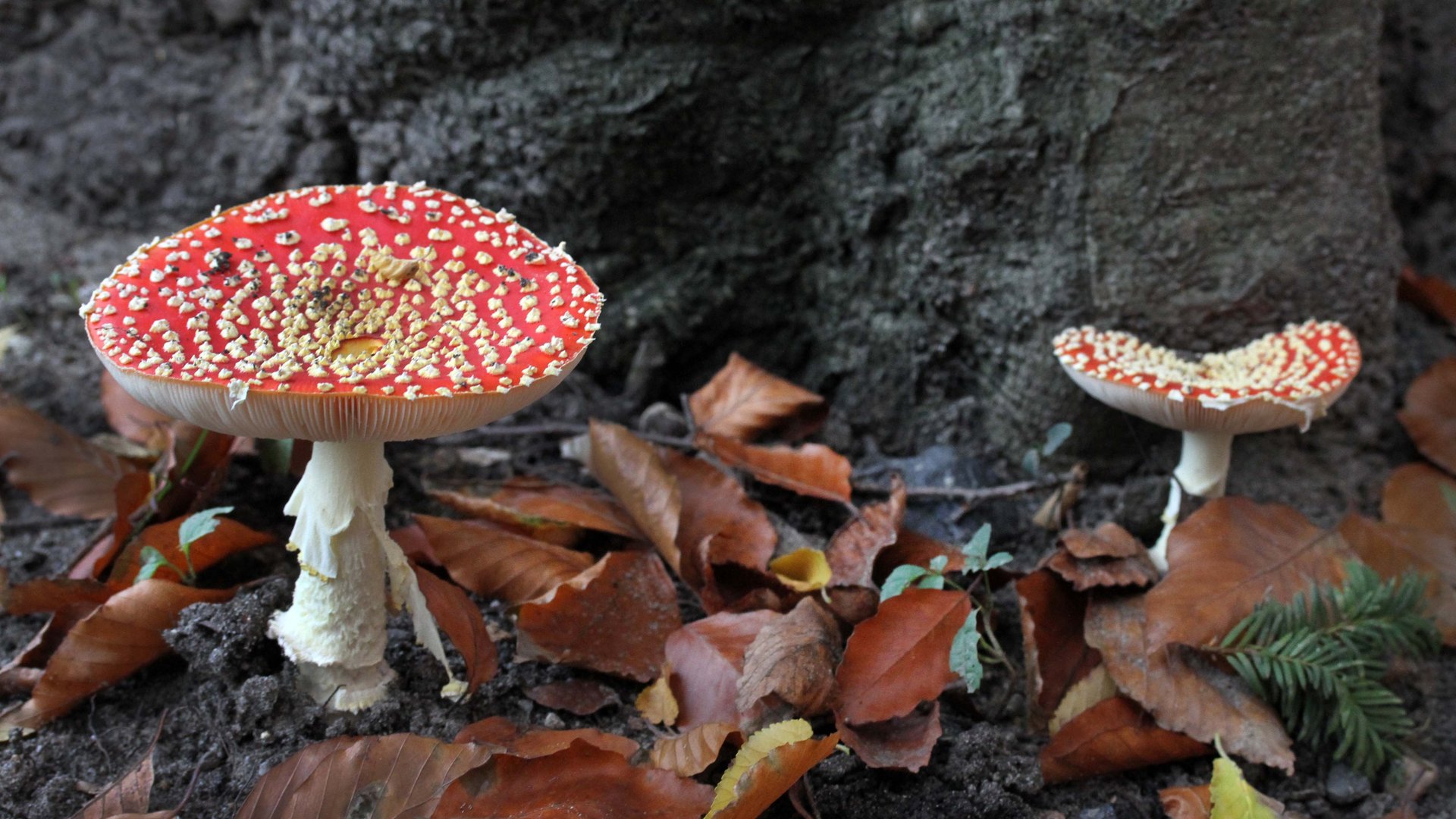Mushrooms come in many sizes and colours. So far, about 14,000 species have been scientifically classified. Many more, though, are waiting to be discovered. There are around 5,250 species of mushroom in the Netherlands. Many of these are under serious threat and some 200 species have become extinct in the Netherlands over recent decades.
Mushrooms come in many sizes and colours. So far, about 14,000 species have been scientifically classified. Many more, though, are waiting to be discovered. There are around 5,250 species of mushroom in the Netherlands. Many of these are under serious threat and some 200 species have become extinct in the Netherlands over recent decades.
Fairy rings
Mushrooms are the fruit bodies of a group known as the higher fungi. They shoot from the mycelium, the underground network of fungal threads. The mycelium sometime grows in a circle. When mushrooms appear above a circular mycelium, they can form a ‘fairy ring’.
Little caps
Every species of mushroom has a different construction. They generally have a number of parts in common:
- cap (pileus)
- gills (lamellae)
- ring (annulus)
- cup (volva)
- stalk (stipus)
The birth of a mushroom
The threads (or hyphae) of two fungi have to merge for mushrooms to grow. A secondary mycelium is formed with (copies of) the two nuclei (a dikaryon). When the nuclei fuse a diploid cell is created out of which mushrooms can form.
Seeds under the cap
The function of mushrooms is to spread spores to help the fungus reproduce. The seeds are minute and can be easily spread by the wind, by water or by animals. The spores of many well-known mushrooms, such as the fly agaric, are located between the gills under the cap.
The best known mushroom
We know mushrooms mostly from eating them. The best known mushroom is the white type and can be found in plastic boxes in the supermarket. The Dutch on average eat three kilos of mushrooms per person per year.
Hallucinogenic
Not all fungi are edible. Some are poisonous. You should not eat wild mushrooms unless you know them to be edible and you should always cook them properly. Some edible kinds can remain toxic until cooked. Some can also be hallucinogenic, such as the Liberty Cap or ‘magic mushroom’ (Psilocybe semilanceata).

